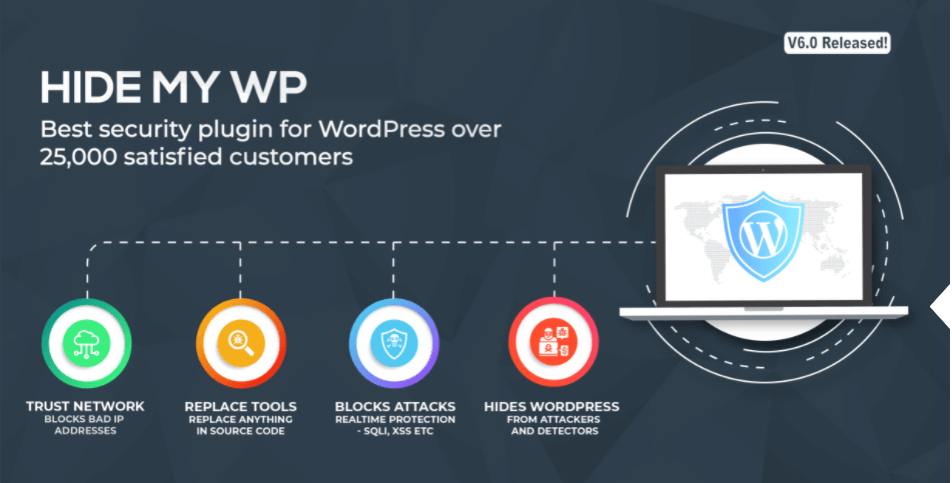WordPress websites can be attacked in innumerable ways, one of which is a distributed denial-of-service attack. Building up a website is as complicated as running it. However, constructive content management systems like WordPress will lend a helping hand for you to manage your websites. Millions of websites on the internet use WordPress, and the hackers know it too.
That’s one reason why they target WordPress websites. Hence, we must take accountability for our website security. WordPress is a secure platform, but only we can manage to strengthen the protection of our WordPress. From SQL vulnerability to Distributed denial of service vulnerability, there are countless WordPress vulnerabilities from which a hacker can profit. Learn about DDOs and ways to prevent this attack in this article.

What Does Distributed Denial Of Service Attack Mean?
Distributed denial of service attack is an attack that hackers use to overwhelm the target website with fake traffic, resulting in disruption of the website’s functioning. We have heard of many cyber-attacks that aim to take access to the target website.
But distributed denial of service attack is different from these attacks. DDoS is an attack that doesn’t look to slither into the website; instead, it intends to crash the websites and take down the servers.
What Are The Intentions Of A Hacker When Using A DDoS Attack?
Hacking is a dangerous game, and we’ll never know the real intention of a hacker. However, the following can be few reasons for a hacker to use distributed denial of attack service:
- The DDoS attack is a primary attack that hacktivists use. They consider this as a way to show their disapproval of how any organization works and target their websites with DDoS attacks.
- Revenge. Attention. Boredom. It could be anything. From a bored teenager to a wronged adult, it could be anyone that attacks your website due to selfish reasons.
- Money motivates everyone, even a hacker. A hacker can use this opportunity to demand money from the website owner for him to discontinue the attack.
- Sometimes a hacker can use DDoS as a baiting attack to cover up his primary attacks too. While everyone is busy taking care of the DDoS attack consequences, he can be running other tricks up his sleeve.
- Hackers use DDoS attacks quite often to bring down an organization or give another organization an upper hand.
How Does Distributed Denial Of Service Attack Work?
Hackers execute this attack remotely using malware-infected computers and other devices like loT devices. These devices are called bots, and the group of bots is known as a botnet. The hacker controls these bots remotely and directs them to send multitudinous requests to the target website.
This action will immensely overwhelm the website resulting in its crash down and denial-of-service to the website traffic( I guess you can see where the name comes from).
How To Prevent DDoS Attack?
This attack can cause you distress if you don’t dodge it, especially at times of good traffic, because one cannot filter good traffic from bad traffic. So follow these methods to block DDoS attacks:
Firewall
A WordPress firewall will act as a barrier between the website and the incoming traffic. A firewall will help you block any dangerous attacks and assists in increasing WordPress security. Hide My WP security plugin has a firewall powered by an IDS engine that can block attacks like SQL, XSS, CSRF, read arbitrary files, and brute force attacks.
Blackhole
If your website gets targeted by a DDoS attack, we can mitigate the attack by using the blackhole. This solution works by creating a null route and sending all the traffic to it. Doing this will prevent the traffic from reaching the website and overwhelming it any further.
However, the downside of this attack is that we cannot send only the bad traffic because we can’t differentiate it from the good traffic. But this is a sacrifice we must make to secure the website, even if it means dancing to the hacker’s tunes and giving him just what he wants, that is, making the website inaccessible.
Request Limiting
Limiting the number of requests that come to the website can be a helpful solution. Request limiting also holds off non-stop login attempts, but this might not be good enough to hold back a full-scale distributed denial of service attack.
Nevertheless, something is better than nothing, no? When protecting a website, every action holds value to it, and each bit of effort counts.
Additional Security Protection
WordPress security plugins like the Hide My WP plugin can help increase the security of a website. It hides your WordPress from theme detectors, hackers, and bots. It can also help you block traffic from potentially dangerous IP addresses and has a robust trust network that blocks unknown attacks.
Some other highlighted features of the Hide My WP security plugin are:

- It lets you hide or rename the themes and plugins folders.
- It can hide your WordPress.
- It helps you change WordPress permalinks.
- It will help you hide the login page of your website to prevent brute-force attacks. This feature will help you set up a login query and login key.
- It informs the user about:
- Value (How they hack you?)
- Page (Which plugin did they use?)
- Impact (How dangerous is that?)
- IP/ users (Where are they from?)
- It will assist in hiding or renaming WP-admins.
- It will disable direct access to PHP files and directory listing.
- It will let you minify HTML and CSS.
- It will allow you to change anything in your source code.
- It has anti-spam included.
Recap
- WordPress websites are the primary targets for many hackers, and they use various attacks like distributed denial of attacks to abuse a website.
- Distributed denial of service attack is an attack that hackers use to overwhelm the target website with fake traffic to take down the servers and result in the crashing of the website.
- The motives behind the attack vary from one hacker to another. Hacktivism, business feuds, or demanding money can be few reasons. However, sometimes utter boredom can be a reason too(that is outrageous, I know).
- We can prevent DDoS attacks by using a WordPress firewall, creating a blackhole route, limiting the requests to the websites, and taking additional protection measures to avoid all security mistakes.
Also Read: What Is A Path Traversal Attack?
